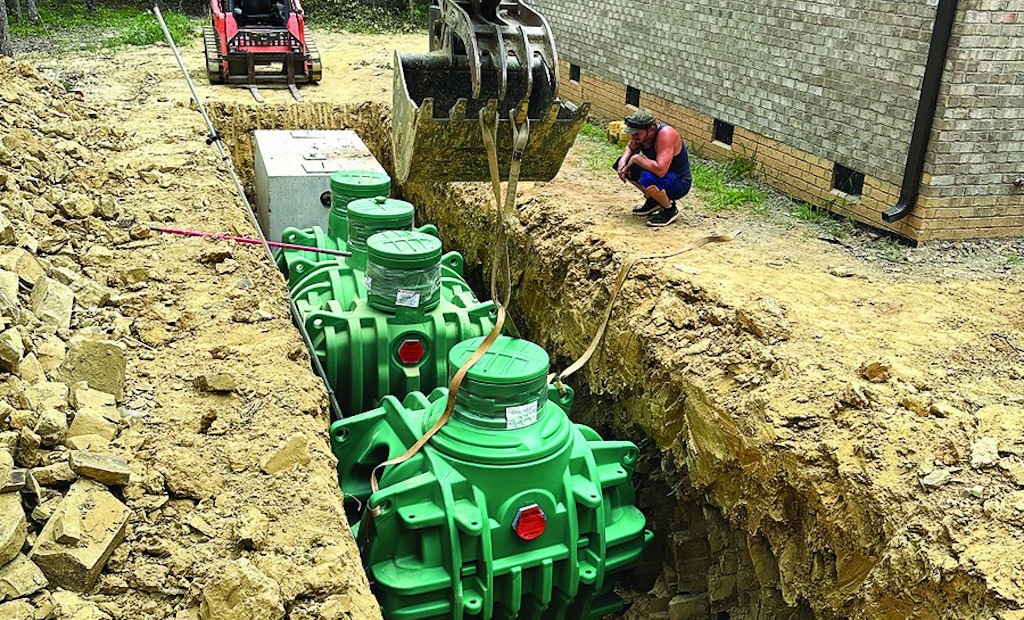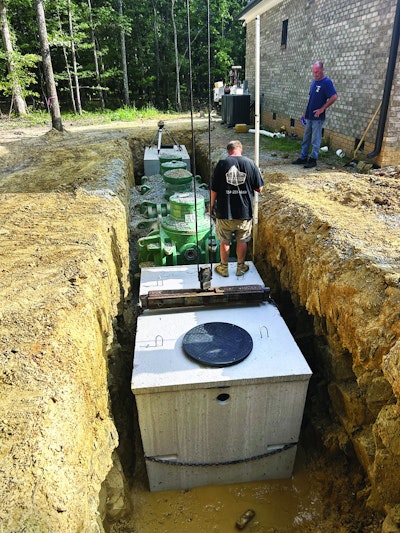
David Hartsell Jr. monitors the setting of the Norweco Singulair Green beside the Hydro-Kinetic Bio-Film Reactor. The system treated wastewater from a home built for a raffle to benefit St. Jude Children’s Research Hospital. (Photos courtesy Chris Stevens/Stevens Septic Service Inc.)
When the opportunity came to volunteer his help to help sick children, Chris Stevens took it.
Stevens owns Stevens Septic Service Inc., of Monroe, North Carolina. Newton Custom Homes invited Stevens to join in its annual charity project to build a house. The homes are raffled off...









